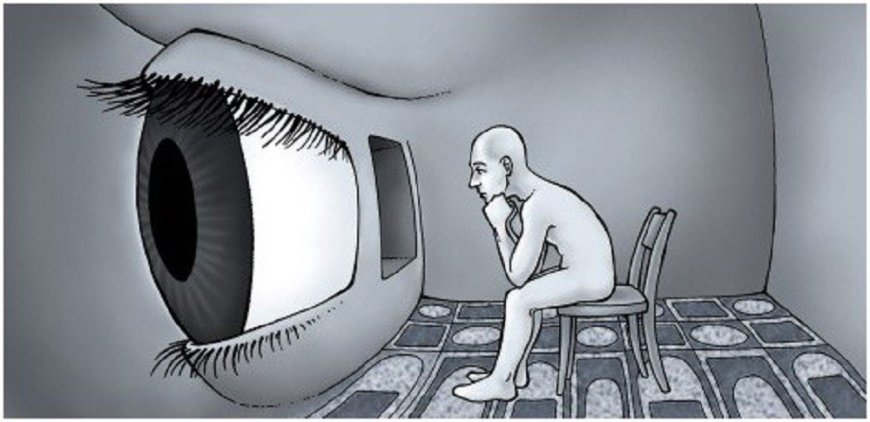Depersonalization syndrome: the impression of living in a dream
Find out what depersonalization syndrome is all about by reading today's article. If you've ever felt like you were going crazy, or in a

Find out what depersonalization syndrome is all about by reading today's article. If you've ever felt like you were going crazy, or in a dream or bubble, you may have had an episode of depersonalization. Depersonalization syndrome is characterized by relentless or recurring episodes of depersonalization.
During such episodes, you may experience a feeling of unreality or ignorance. Plus, you may feel cut off from yourself. People who suffer from it feel as if they are outside observers.
Depersonalization episodes
Depersonalization episodes bring a feeling of unreality or cutoff. You may also feel as if you don't know the world around you, inanimate objects, or your surroundings. Perhaps you feel like you are in a fog, in a dream, or in a bubble.
In addition, you may feel that a curtain or glass separates you from the world around you. You may think your surroundings are artificial, with no color or no life.
Depersonalization is usually accompanied by subjective visual disturbances such as foggy vision, increased visual acuity, enlarged or decreased field of vision, two-dimensionality or flatness, exaggerated in = three-dimensionality, or changes in the distance or size of objects (e.g. macropsy or micropsy).
Depersonalization syndrome can have an impact on your social life or work.
Am I going crazy?
People with depersonalization syndrome may find it difficult to describe their problems. They may think they are "crazy" or "going crazy" or fear irreversible brain damage.
A symptom that is commonly associated with this disorder is a subjective change in the perception of time (e.g., time is passing too slowly or too fast). Another common symptom is difficulty remembering clearly things from the past.
Must Read: 4 school habits that are harmful to the environment
Headaches, tremors or dizziness are also common. Many people may also suffer from obsessive worry and reflection.
In this case, many people become obsessed with whether they really exist or if they control their perceptions. It is often associated with varying degrees of anxiety and depression. People suffering from this syndrome also tend to be physiologically hyporesponsive to emotional stimuli.
How does depressonalization syndrome develop?
Depersonalization disorders usually begin to develop around the age of sixteen. However, such a syndrome can also manifest itself in early or middle childhood.
Less than twenty percent of cases develop after the age of twenty, and only five percent develop after the age of twenty-five. The development of this syndrome in your forties or later is extremely rare.
The development of the disorder can be both gradual and very sudden. Episodes can last for hours or days, or even weeks, months, or years.
While in some patients the intensity of symptoms may increase and decrease significantly, others experience the same level of intensity. In extreme cases, symptoms can last for years or decades.
The internal and external factors that influence the intensity of symptoms differ significantly, although there are common patterns. Symptoms may worsen due to stress, mood, anxiety symptoms, new stimulating or overstimulating circumstances, or physical factors such as lack of sleep.
Depersonalization syndrome can be very unpleasant. People who suffer from it usually feel like they are starting to freak out or are living asleep, which can cause them to seek medical attention. Fortunately, such disorders are not dangerous.
